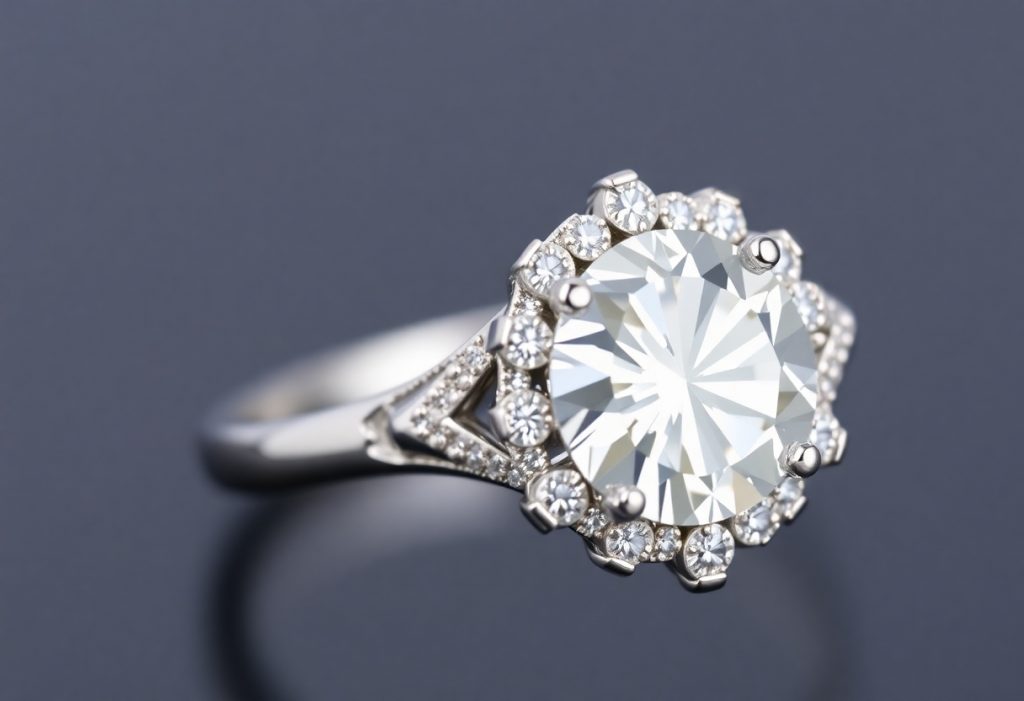While diamonds have long been associated with some of the happiest days of one’s life, they can also be the source of so much suffering for others. From human rights abuses and blood diamonds to habitat destruction and water pollution, the truth is that diamond mining is a messy business.
Ironically, the gem that we associate with love and devotion can be traced to unethical roots. However, there are things that we can do as consumers to do our part. In this article, we’ll explore why diamonds are unethical and equip you with the ammo to make an educated decision when shopping for your forever adornment.
How Did Diamonds Become So Popular?
Why are diamonds so valuable and why are diamonds so expensive? Today, diamonds are a girl’s best friend, but they weren’t always the most coveted stone around the globe. In fact, we can thank De Beers for the popularity of the diamond as the company launched a major advertising campaign in the 1930s that skyrocketed the gem’s notoriety. De Beers told consumers that diamonds were the ultimate symbol of true love and coined the phrase, “A Diamond is Forever.” Couples around the world took notice and people have been proposing with a diamond engagement ring ever since.
The newfound popularity of diamonds drove up pricing, too. At the time, De Beers controlled nearly 90 percent of rough diamonds. This allowed the company to limit the overall supply of diamonds which lead to an increase in price.
The Human Impact of Diamond Mining
Blood Diamonds
The term “blood diamond” or conflict diamond entered the public consciousness in the 1990s when the United Nations established it to address devastating civil wars taking place in western and central Africa. At the time, rebel groups were exploiting diamond-rich countries such as Angola, the Democratic Republic of the Congo, and Sierra Leone as they forced locals to work in horrific conditions and wreaked havoc on the environment.
These human rights violations were shocking, and as awareness of “conflict diamonds” grew, measurements such as The Kimberley Process were put into place to curb their circulation. The Kimberley Process is a certification scheme used to track a diamond from mine to store to determine whether it’s truly conflict free. Kimberley Process certification has been highly successful with sources such as The World Diamond Council claiming that 99% of the diamonds used in today’s market are conflict free.

That being said, the process isn’t foolproof. While the number of blood diamonds available in the U.S. has dropped significantly in recent years, the issue hasn’t been eliminated. Unfortunately, mined diamonds from regions such as Zimbabwe are still considered suspect due to international concern of forced labor and human rights abuses.
What’s more, some activists argue that the true number of blood diamonds in circulation could be more than statistics are accounting for. The figures that we see strictly adhere to the UN’s definition of conflict diamonds being precious stones that fund rebel movements against a country’s government. However, places like Zimbabwe don’t necessarily fit this mold.
The Environmental Impact of Diamond Mining
Where Do Diamonds Come From?
Diamonds are formed thousands of miles beneath the earth’s surface when carbon deposits are subjected to high temperatures and high pressure. Some stones can materialize in a matter of days or months, while others form over millions of years. Diamonds are then extracted from the earth from diamond mines around the world, most commonly originating from South Africa, Russia, Australia, India, and Canada.
How Are Diamonds Mined?
There are several forms of diamond mining, but the most popular methods are open-pit, underground, and alluvial mining. Of these, open-pit and underground mining are the two versions that most people are familiar with. Open-pit and underground mining is almost always performed by world-famous mining companies using high-tech equipment and technology.

However, the third most common method of diamond mining, alluvial mining, looks quite different. Alluvial mining is what might come to mind when you imagine unethical mining practices. This process is performed by hand forcing workers to endure grueling physical labor and horrific working conditions. Alluvial mining can be easily exploited by the wrong people and is often associated with blood diamonds.
Diamond Mining’s Impact on the Earth
Where exactly are diamonds found? Unfortunately, diamond miners don’t mine on lifeless wastelands. Diamond miners mine wherever diamonds are found, including within local communities and ecosystems.
The impact that diamond mines have on these spaces is anything but small. According to the US Geological Survey, “The average stone in an engagement ring is the product of the removal of 200 to 400 million times its volume of Earth.

But the damage doesn’t stop there, the waste rock and tailings produced from mining have to be stored somewhere, usually in what’s referred to as a ‘tailing pond.’ Tailing ponds are massive dump sites where mining byproducts undergo chemical reactions resulting in acidic water that is potent enough to dissolve lead, copper, and zinc. Even worse, this dangerous concoction merges with groundwater, contaminating, and often killing, living things that depend on it.
Do Conflict Free Diamonds Exist?
Diamond Marketing vs Reality
Unfortunately for shoppers with their heart set on an ethical diamond for their center stone, finding a truly conflict free diamond is more difficult than many companies make it out to be. The truth is, that diamond mining is destructive no matter how you look at it.
Many jewelers in the diamond industry claim that natural diamonds sourced from Canada are more environmentally friendly than those imported from Africa. Unfortunately, this isn’t necessarily true. Every day, mines in Canada are responsible for one million tons of waste rock and 950,000 tons of tailings. To put things into perspective, Canada’s Diavik diamond mine is so massive that it can be seen from space
Not to mention, gemstones in the diamond trade are shipped from around the world. When you buy a Canadian diamond you’re still supporting the market for less-ethical African diamonds.
How Can I Make a More Ethical Choice?
First things first, if you want to purchase a mined diamond it’s important to do your research. Be sure to choose which company you buy from with care. Determine where your stone is coming from and be certain to avoid stones that were mined in Angola, Zimbabwe, and The Democratic Republic of Congo.
However, to make the biggest impact that you can, we recommend stepping away from mined diamonds altogether.
Lab Grown Diamonds
Did you know that not all diamonds come from the ground? That’s right, you can still find the diamond of your dreams minus the ethical implications with a lab diamond. A lab created diamond is a real diamond, down to its chemical makeup. Just like a natural diamond, a lab grown diamond is made from pure carbon and is strong enough to cut glass
Plus, as an added bonus, lab grown diamonds cost a fraction of the price that mined diamonds do, meaning that you can put your hard-earned cash towards the perfect wedding, honeymoon, or first home.

Diamond Alternatives
For an even more affordable option, opt for a diamond alternative. Captivating diamond simulants, super sparkly moissanite, bright colorful gemstones – the list goes on. Diamond alternatives are a fabulous option for shoppers who want to say no to mined stones while saving a little extra cash in the process.
Antique or Vintage Diamonds
If you’re still convinced that diamonds are a girl’s best friend but want don’t want to fuel the industry consider buying used. Antique diamonds, recycled diamonds, vintage diamonds – each of these second-hand rings are a more sustainable choice for diamond shoppers that are on the hunt for a diamond ring that follows ethical practices.










Leave a Comment